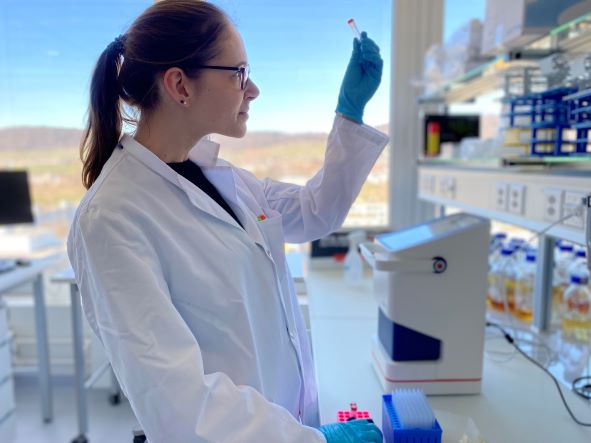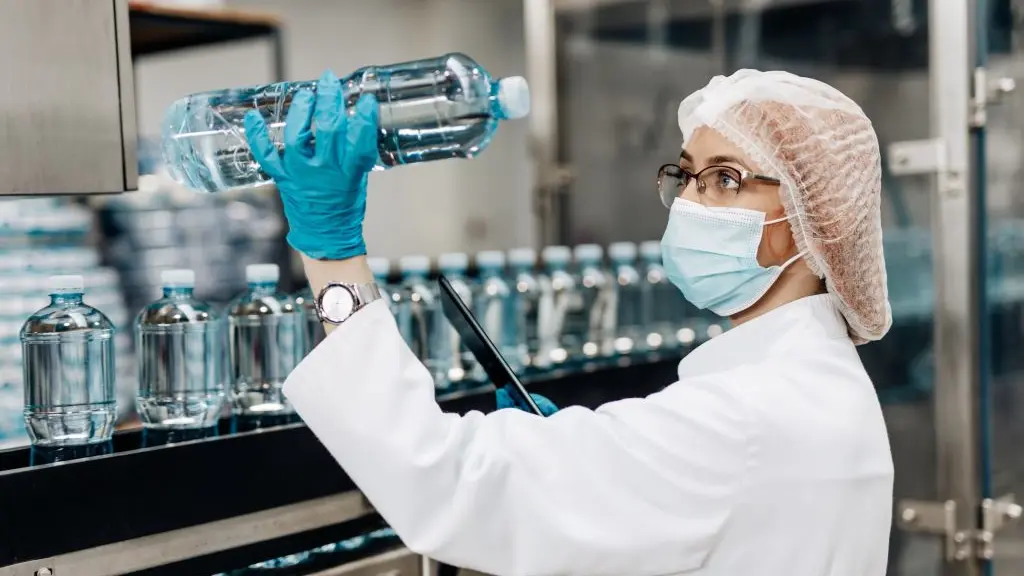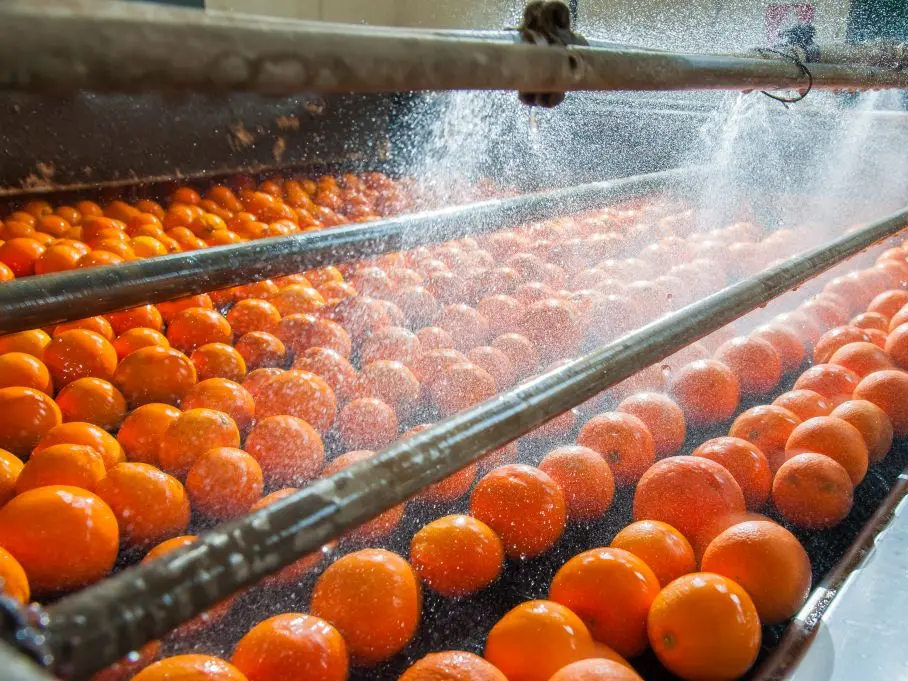Taking control of water microbiology requires relevant and accurate data. This article provides an overview of microbial detection methods and a deep dive into two rapid methods to quantify viable bacteria: the adenosine triphosphate (ATP) test and intact cell count (ICC).
The relevance of microbial testing
Industries as diverse as Food & Beverage (F&B), semiconductor and car production all use large amounts of water for different purposes and share a common source of risks and costs, namely waterborne bacteria. Approximately 25% of worldwide food loss is caused by microbial spoilage [1]. Not only do bacteria pose potential harm to end-products but also to employees, equipment and infrastructure. For instance, microbiologically influenced corrosion (MIC) leads to significant asset losses and unplanned maintenance, particularly in the oil and gas industry. Companies that require microbiologically sterile water in their production processes incur a substantial energy and maintenance bill from extensive water recirculation systems.
Therefore, many industries require detection and quantification of the total microbial burden as well as specific bacteria to reduce costs and risks of business interruption.
Solutions to quantify bacteria in water
The industrial microbiology market offers plenty of products to quantify viable (i.e. living) bacteria which are ultimately based on only a few relevant microbiological methods.
For one, the classic cultivation method which utilizes the fact that even one viable bacterial cell can grow into a colony of millions of cells which can then be seen and counted.
Different enzyme-substrate based methods use biochemical reactions with cell components to generate a light signal. Measuring the brightness of an enzyme reaction with adenosine triphosphate (ATP) is a common practice which will be further elaborated in this blog post.
Unlike cultivation and enzyme-substrate based methods, flow cytometry is an optical measurement method that directly counts viable bacteria by analysing and counting fluorescence signals that originate from the surface and from the DNA of cells which have been stained with dyes that emit different colours. One signal equals one bacterial cell which allows for single cell counting.
Using ATP to assess microbial load
ATP is the fuel of all living cells and thus the basic energy molecule for all cellular processes. Each living cell contains intracellular ATP [2], [3] which is required for regulation of stored energy, enzyme functionality and for biosynthesis [2].
The traditional cultivation method for microbiological analysis is slow and lacking sensitivity because only a fraction of cells might form colonies [2]. Measuring ATP does not depend on bacterial growth and is often used to examine the effectiveness of cleaning and for hygiene monitoring. Finding ATP on surfaces serves as an indicator for insufficient cleaning and contaminants like bacteria [4]. While ATP tests are rapid, easy to use and affordable [4], they might not be sensitive enough [3].
Solutions that estimate the amount of bacteria through quantification of intracellular ATP proceed as follows:
- Measure free (extracellular) ATP through the light signal generated by an enzyme reacting with the ATP. The greater the brightness of the light signal, the more ATP is present.
- Measure total ATP (intra- and extracellular), after disrupting cells in the sample to liberate ATP present inside of the cells (intracellular ATP).
- Subtract (1) from (2) to arrive at intracellular ATP. Then estimate the number of bacteria present in the sample based on the calculated value for intracellular ATP.
The difference between ATP and the number of viable bacteria
Non-intact or
non-viable cells cannot generate ATP which makes intracellular ATP suitable to
indicate the amount of viable cells [2].
Although
linear relationships between intracellular ATP and colony-forming units (CFU)
have been discovered, the ATP concentration per cell differs between bacterial
species and even from cell to cell within the same species [2]. Inferring bacterial cell
concentrations from ATP concentrations remains challenging, partially due to
ATP concentrations not being uniform across bacterial cells [3]. One explanation for this is
that the physiological state of a given cell can affect the concentration of
its energy currency , meaning ATP [3].
The ATP
concentration in microorganisms therefore varies depending on species, cell
size and metabolic state with for instance spores having less ATP [4]. Hence, conflicting correlations
have been found between viable bacterial counts and ATP concentrations [4].
A series of
controlled studies further revealed weak precision and reproducibility as well
as unacceptably large variability in ATP tests results [5]. Moreover, scientists at the Food
Industry Centre, Cardiff Metropolitan University found that some ATP test
devices might be strongly dependent on the operating temperature. They further
discovered that the time from device activation to signal read-out might affect
the quality of the results.
Single-cell counting using ICC
Areas of hygiene monitoring, quality control in F&B as well as research applications require accurate quantification of microbes in water, including their viability determination [3].

Flow cytometric quantification of viable cells is based on
direct staining of cell surfaces and DNA, which then emit a fluorescence signal
that is analysed within a flow cytometer. Through this direct quantification of
the cells present in a sample, results are directly related to the presence of
whole cells and are independent from the state and size of cells. Compared to
the traditional method, results are also independent from bacterial growth. Hence,
bacterial detection with flow cytometry provides a quantitative and accurate
result, removing the risk of missing an inactive cell population that might
eventually cause a contamination.
Performing ICC tests on rqmicro.COUNT
The flow cytometry-based technology from rqmicro allows you to rapidly and accurately quantify bacterial cells, including VBNC, in less than an hour and at the same price as ATP tests. With the portable rqmicro.COUNT instrument, you gain reliable results about the microbial load in your water at critical control points, thereby facilitating quality control measures. Besides intact (viable) and total (viable + dead) cell count, the rqmicro method can detect specific pathogens (Escherichia coli, Legionella) by means of the appropriate test kits. ATP measurements on the other hand do not allow for such specific detection and quantification.
As a reliable tool providing relevant insight into your water system, rqmicro.COUNT enables you to rapidly assess the effectiveness of cleaning measures. Consequently, rqmicro.COUNT will advance hygiene monitoring and support you in keeping water and end-products safe.

Get in touch with our sales representative for a free consultation on our solution.
References:
[1] Papkovsky, Dmitri B., and Joseph P. Kerry. "Oxygen sensor-based respirometry and the landscape of microbial testing methods as applicable to food and beverage matrices." Sensors 23.9 (2023): 4519.
[2] Bottari, Benedetta, Marcela Santarelli, and Erasmo Neviani. "Determination of microbial load for different beverages and foodstuff by assessment of intracellular ATP." Trends in Food Science & Technology 44.1 (2015): 36-48.
[3] Hammes, Frederik, et al. "Measurement and interpretation of microbial adenosine tri-phosphate (ATP) in aquatic environments." Water research 44.13 (2010): 3915-3923.
[4] Bakke, Mikio. "A comprehensive analysis of ATP tests: practical use and recent progress in the total adenylate test for the effective monitoring of hygiene." Journal of Food Protection 85.7 (2022): 1079-1095.
[5] Whiteley, Greg S., et al. "The perennial problem of variability in adenosine triphosphate (ATP) tests for hygiene monitoring within healthcare settings." Infection Control & Hospital Epidemiology 36.6 (2015): 658-663.
[6] Sousi, Mohaned, et al. "Comparing the bacterial growth potential of ultra-low nutrient drinking water assessed by growth tests based on flow cytometric intact cell count versus adenosine triphosphate." Water research 203 (2021): 117506.
[7] Kong, Xiujuan, et al. "Considerable discrepancies among HPC, ATP, and FCM detection methods in evaluating the disinfection efficiency of Gram-positive and-negative bacterium by ultraviolet radiation and chlorination." Desalination and Water Treatment 57.37 (2016): 17537-17546.



